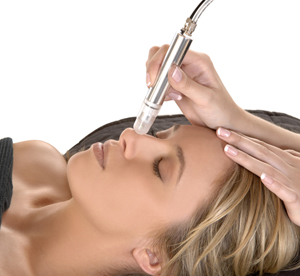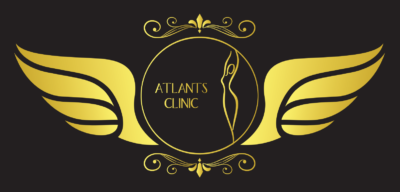Microderm Abrasion

Microdermabrasion is one of the newer “skin rejuvenating” techniques employed to help improve the texture and appearance of the skin.
Microdermabrasion is one of the category of treatments such as botulinum toxin (Botox®), dermal fillers and superficial chemical peels where the treatment session is short, with few side effects and virtually no time off work. They also do not require any surgery.
Microdermabrasion was discovered in the U.S.A. and, in 2010, over 450,000 treatments were performed in America, a fall of 27.5% on 2009 figures. These statistics come from the American Society For Aesthetic Plastic Surgery (ASAPS), and they make microdermabrasion the fourth most popular cosmetic procedure in that country.
Various types of microdermabrasion machines have started to be used in the U.K. in the last couple of years, with many becoming available in beauty salons.
If you are considering microdermabrasion, the following information will give you a basic understanding of the procedure. It can’t answer all your questions, since a lot depends on the individual patient and the practitioner. Please ask a practitioner about anything you don’t understand.
What is microdermabrasion and how does it work?
Microdermabrasion involves a stream of fine micro particles being blasted across the face by a kind of “skin vacuum cleaner”. The powder used varies between different machines and can include crystals of aluminium salts, sodium bicarbonate crystals, or even sodium chloride (table salt) crystals.
Movement of these crystals under pressure loosens and partially removes the outermost epidermal layer of the skin (see diagram below) in a kind of “sandpapering” effect. It helps improve the appearance of the skin and the circulation and generally gives the skin a healthy glow. Once the outer layer of skin has been removed, the layers of skin beneath then increase their production of new skin cells to renew the surface layer.
What skin problems can microdermabrasion treat?
Microdermabrasion is a mild treatment causing minimal damage to the surface of the skin. Results are subtle and include a freshening in the appearance and improvement in the texture of the skin, and a reduction in the appearance of fine lines or wrinkles.
Some stretch marks respond well to this treatment and some people can experience a reduction in the appearance of brown age spots on their skin.
This procedure is sometimes used in combination with chemical peels or some skin creams.
Microdermabrasion is not suitable for deeper wrinkles and scars, deep hyperpigmentation problems (areas of darker pigment) or broken veins in the skin.
What happens during a microdermabrasion treatment?
Your first discussion with a practitioner should clearly set out your expectations and what the practitioner thinks will happen to your skin as a result of microdermabrasion. A medical history should be taken, to ensure that there are no reasons why you shouldn’t have the treatment, and you would normally be asked to sign a consent form at this time which means that you have understood the potential benefits and risks associated with microdermabrasion. Photographs may also be taken by the practitioner, as a “before and after” comparison at a later date.
If you have a history of herpes simplex infections (cold sores), an anti-viral drug may be prescribed as a precaution for the course of the treatment.
The skin is usually cleaned prior to treatment, and you will be provided with goggles to protect your eyes from any stray crystals as the wand of the microdermabrasion machine is passed over the skin in smooth, stroking movements. The intensity (or pressure at which the crystals hit your skin) of treatment can be varied, either by altering the amount of crystals used, the pressure used, or the length of treatment.
Crystals are directed onto the face and then immediately “vacuumed “ away, along with the loosened skin particles. All the waste goes into a separate, closed container to make sure that there is no risk of contamination from dead skin products. The crystals are not re-used.
Follow-up treatment
This procedure can be repeated every week or so for a series of 5 to 10 sessions. Maintenance treatments can then be scheduled every three or four months.
How long will it take to recover from microdermabrasion?
Treatment usually takes around 10 – 30 minutes, but stretch marks can take as long as 2 hours to treat. Most patients find that they can return to work immediately after treatment.
What are the risks and potential complications from microdermabrasion treatment?
The treatment is usually painless and doesn’t irritate the skin greatly. All patients will experience some tightness and redness of the skin, which may last for an hour or two following treatment. On occasions, redness or streaking of the skin may continue for a day or so and sensitive skin around the eyes can become swollen, but cold compresses will help to get rid of this side effect.
Deeper treatments aimed at scar tissue or stretch marks may produce some spotting of blood, with healing taking around 3 – 4 days.
There is a very small risk of mild pigment changes to the skin that generally clear up within a month, and the risk of any scarring is very rare with this procedure.
What should you do after a microdermabrasion treatment?
Use a bland moisturiser to help hydrate the skin, and liberal amounts of sunscreen to protect it from the sun. Deeper treatments for scars and stretch marks may require the use of antibiotic ointment for a few days whilst the skin heals. Contact your practitioner if you notice any signs of infection or pigment changes.
Additionally, when you leave a clinic after a microdermabrasion treatment you are likely to suffer from varying degrees of redness depending on the depth of the abrasion, which may not be the most attractive face that you wish to present to the public as you walk down the street. There is however a solution.
Who should not have a microdermabrasion treatment?
This treatment is generally suitable for all skin types. Patients not suitable are those who have any active skin infections (such as cold sores); a history of problems with skin healing; or those who have taken isotretinoin within the last 12 months.
Package
Per Session
Package of 6 sessions
Microdermabrasion without Facial
$108
$499
Microdermabrasion with Facial
$135
$599















